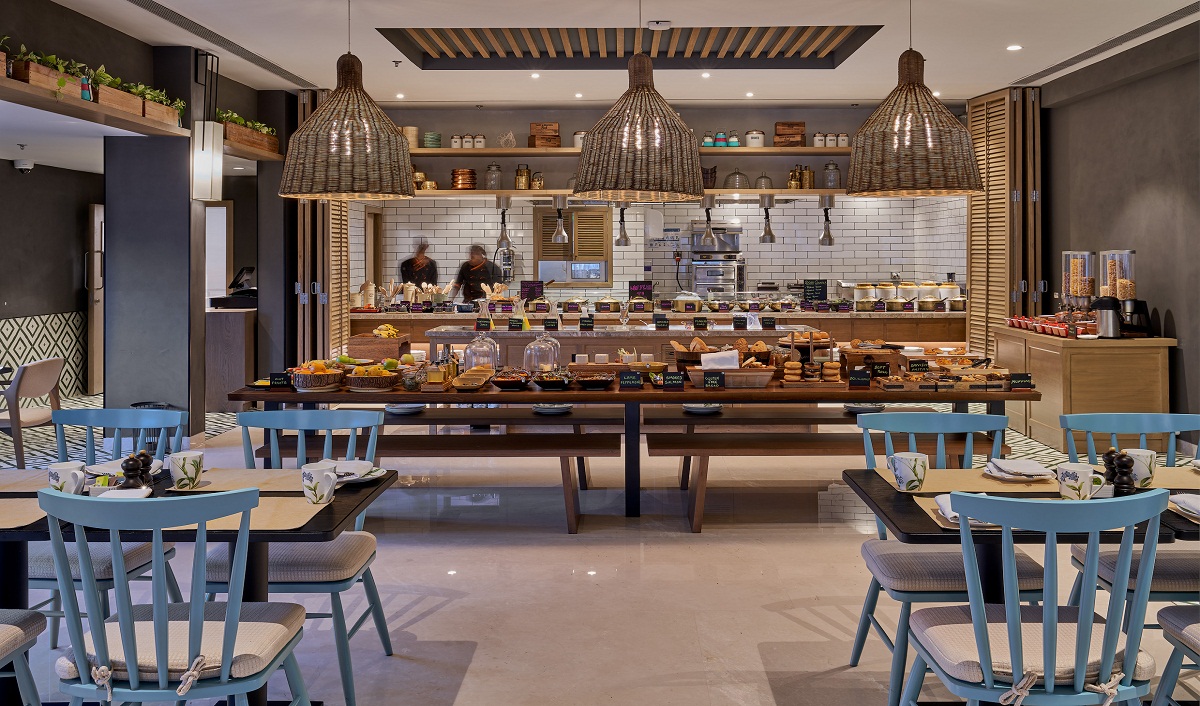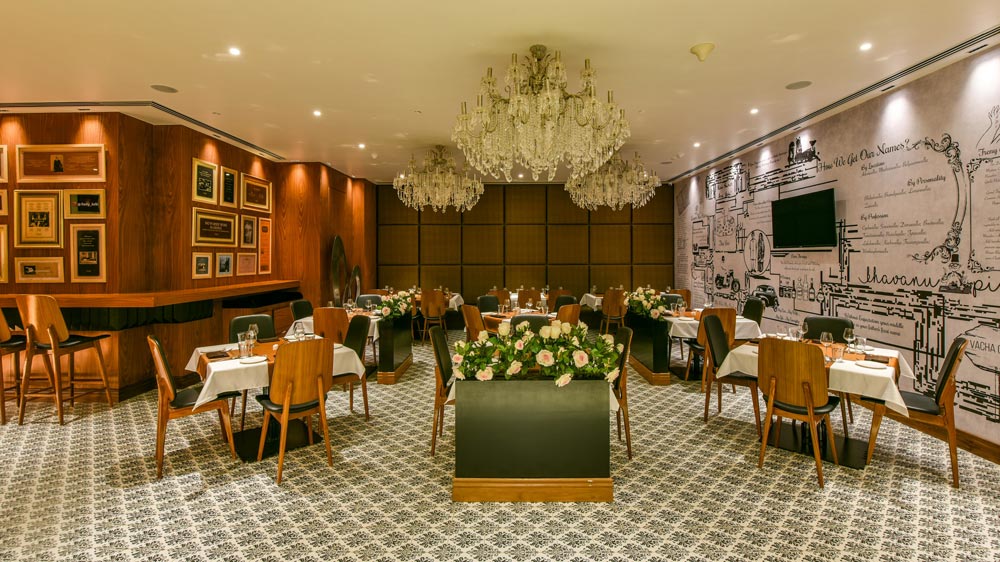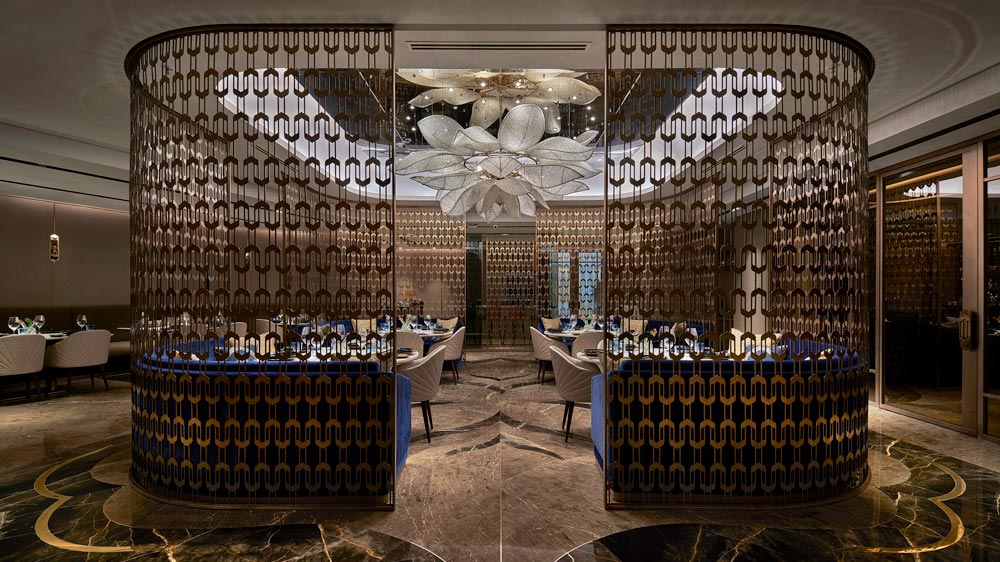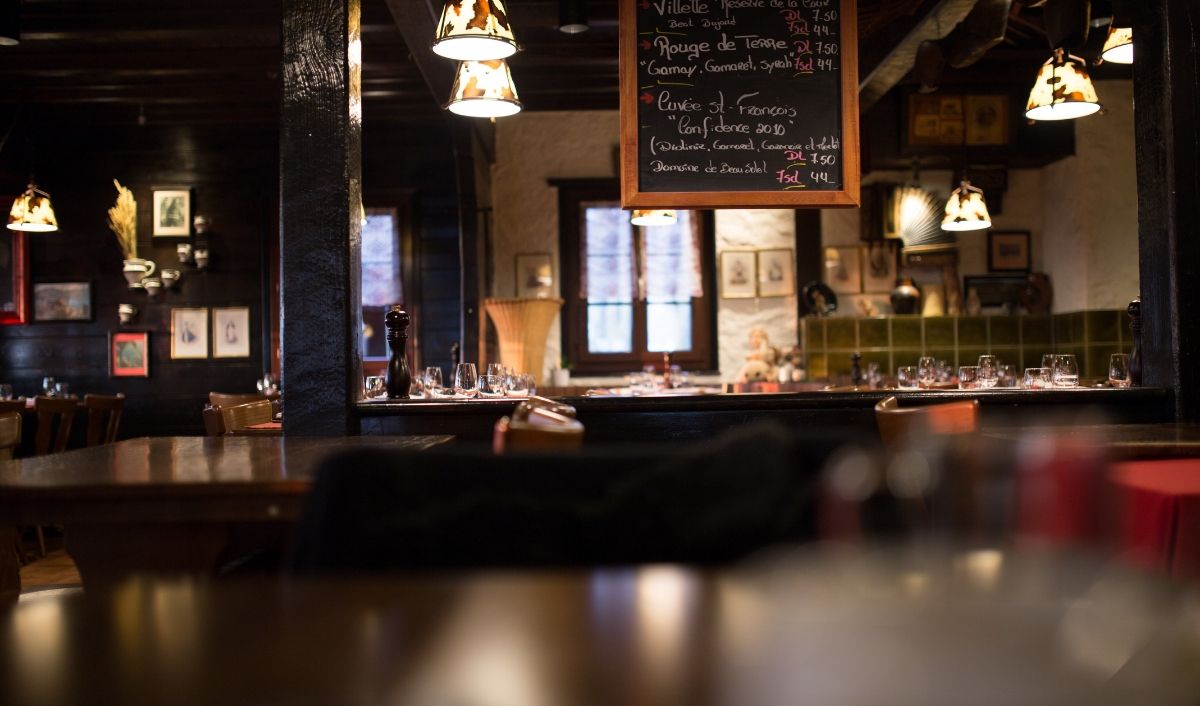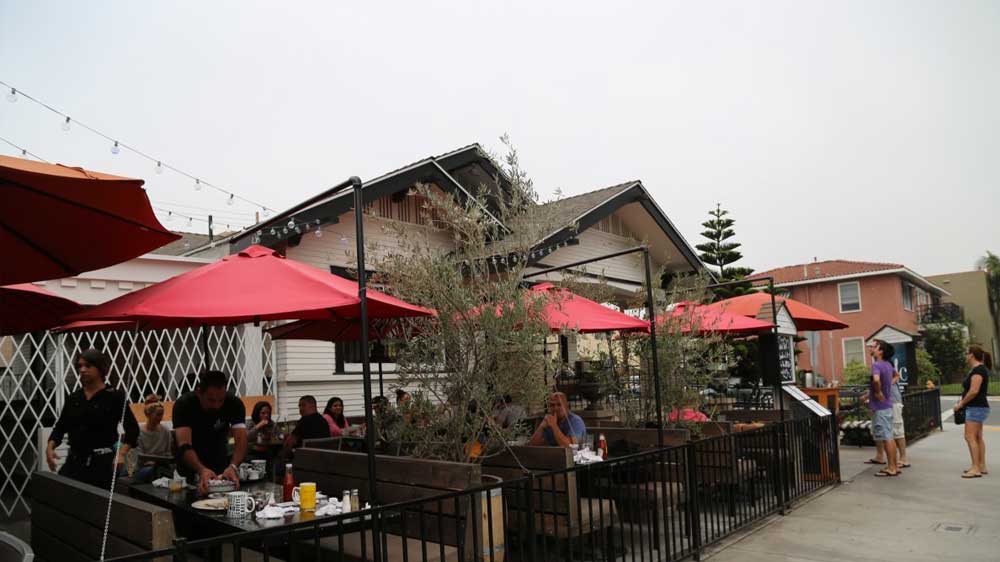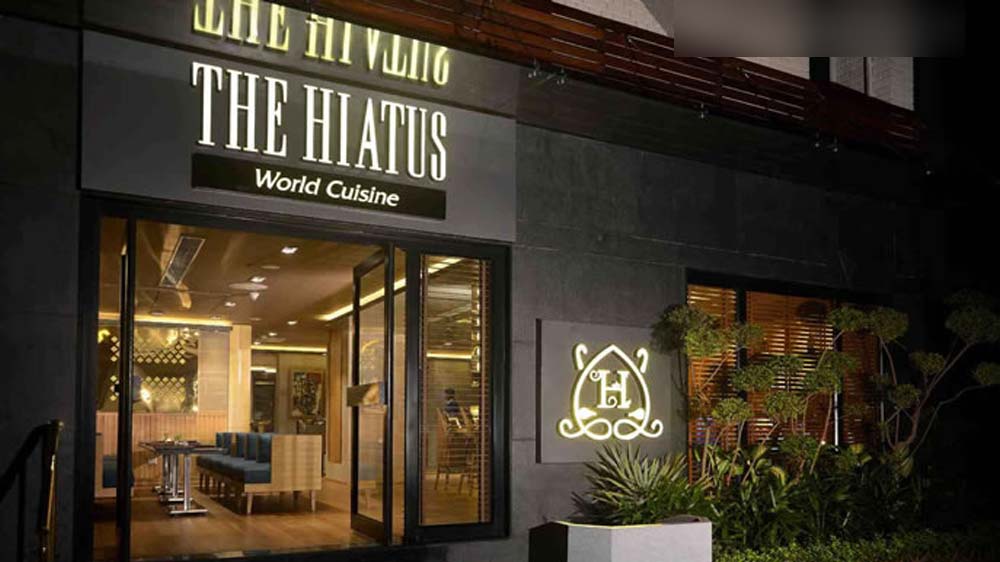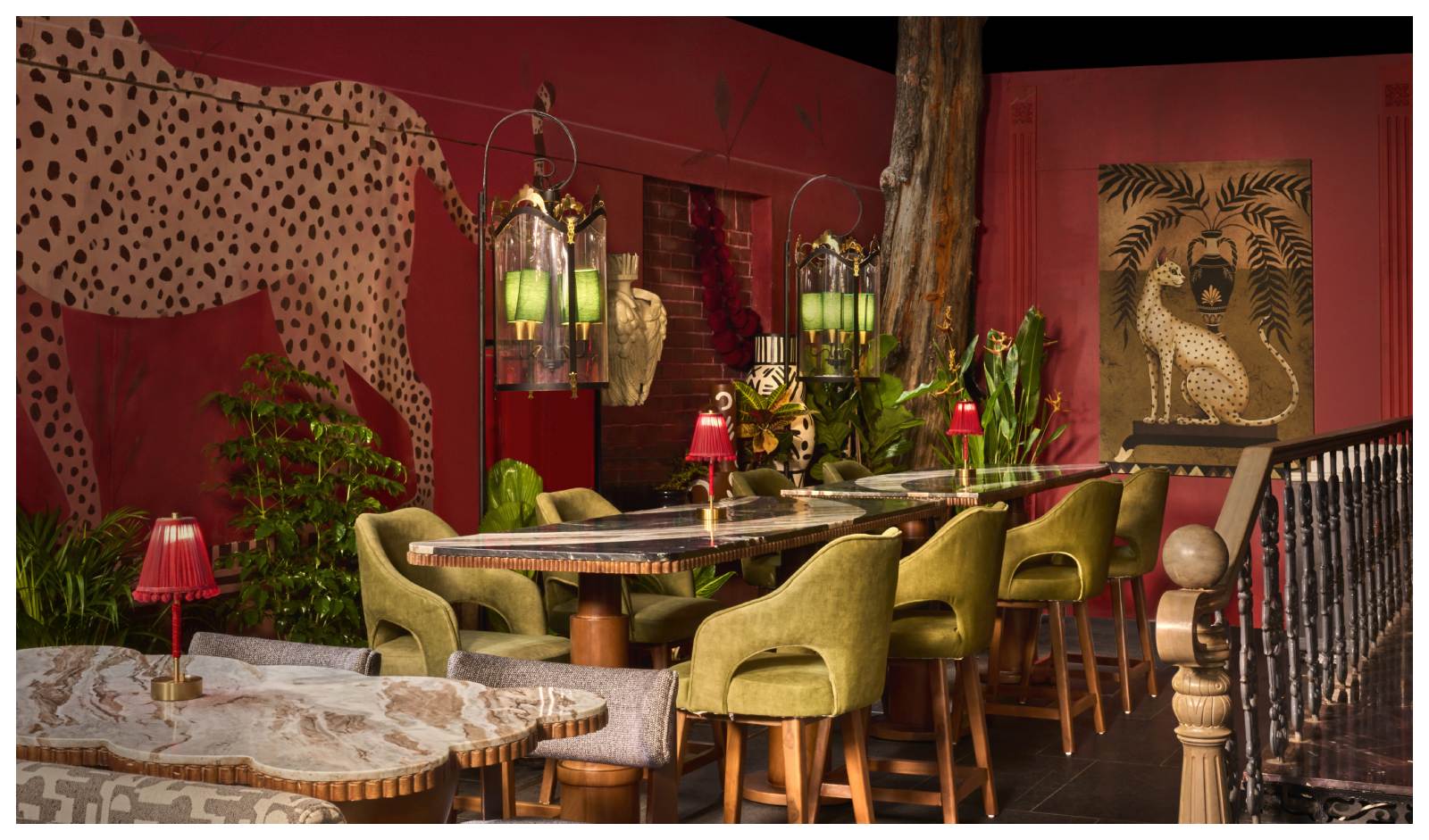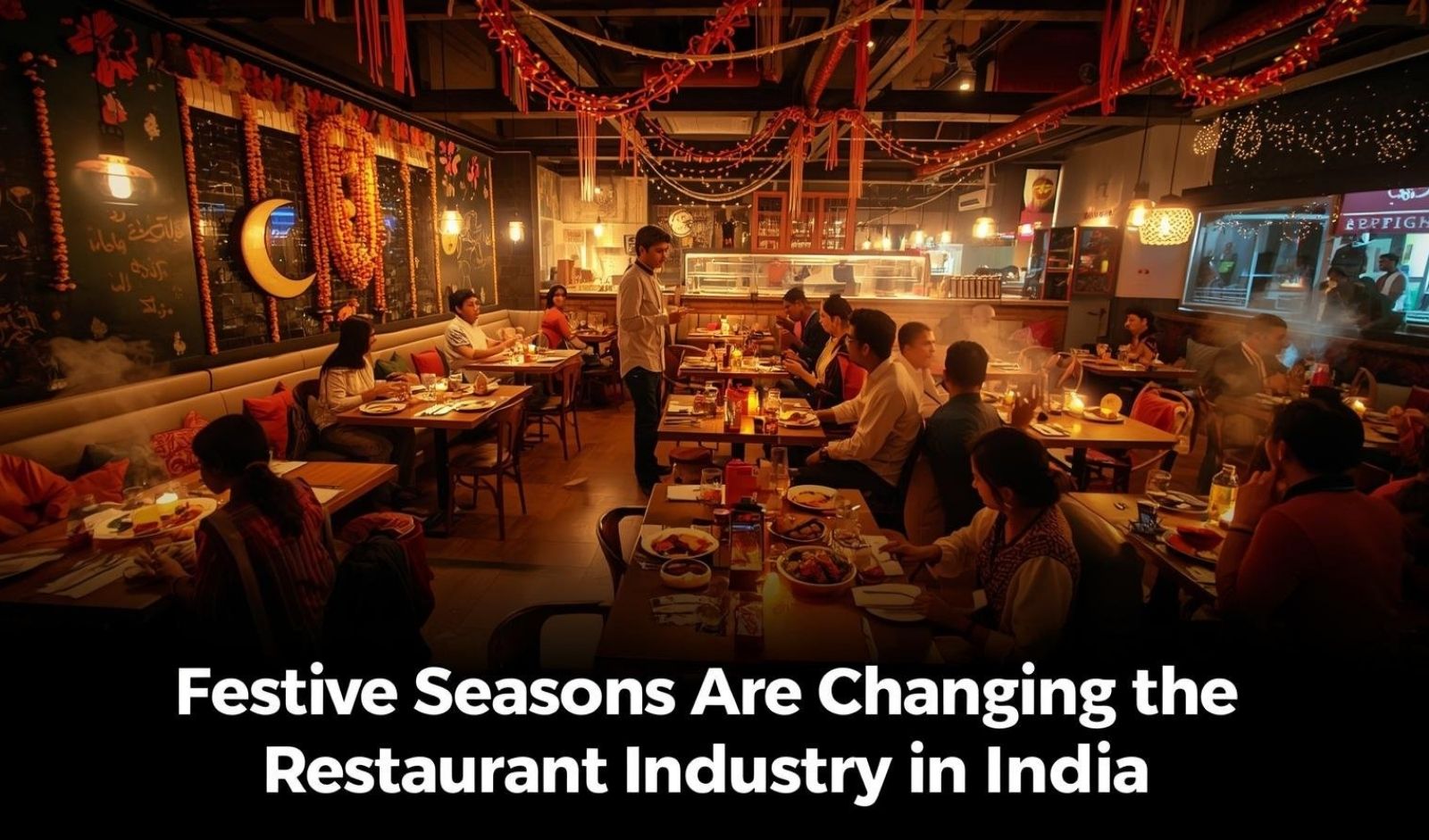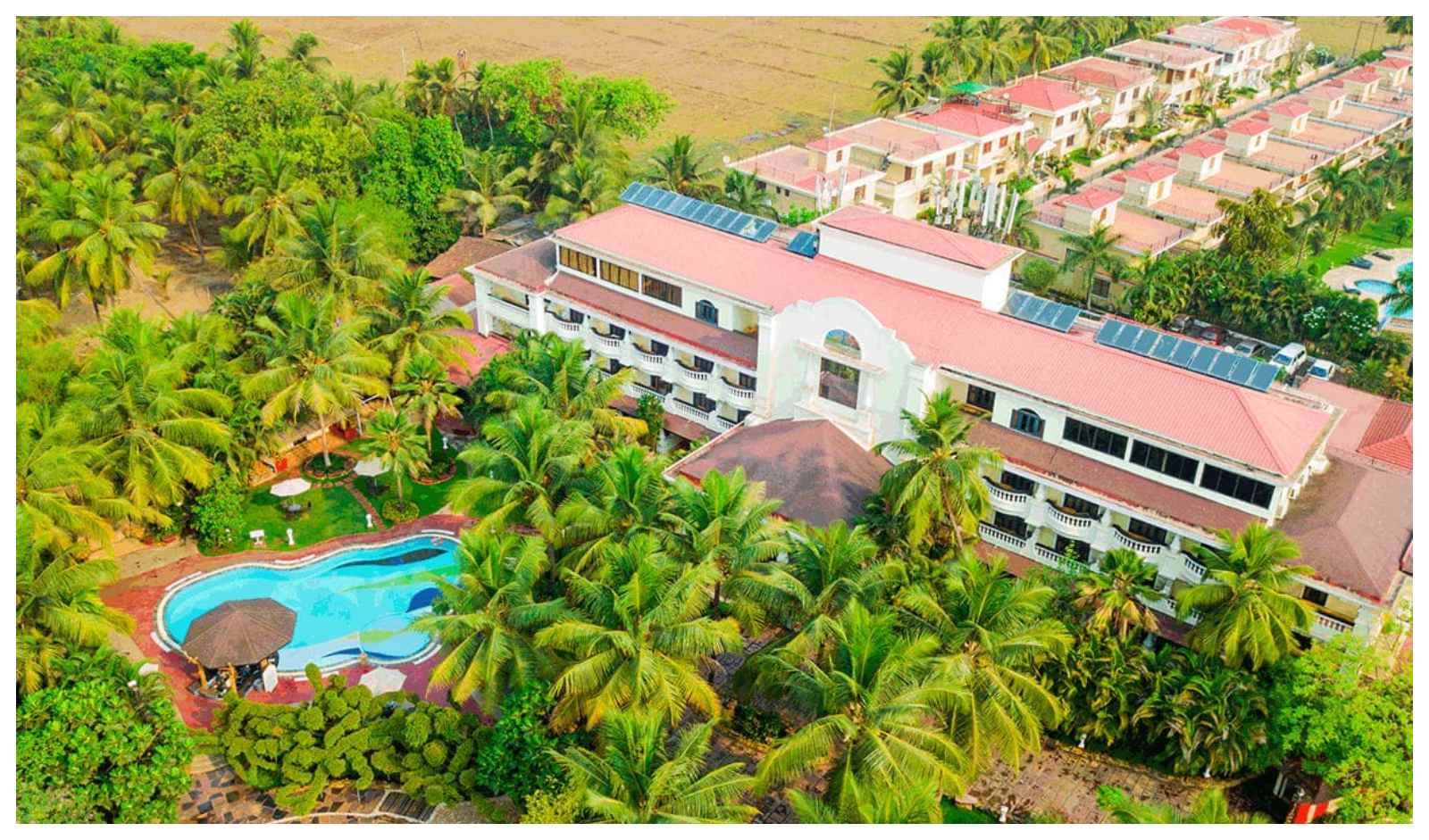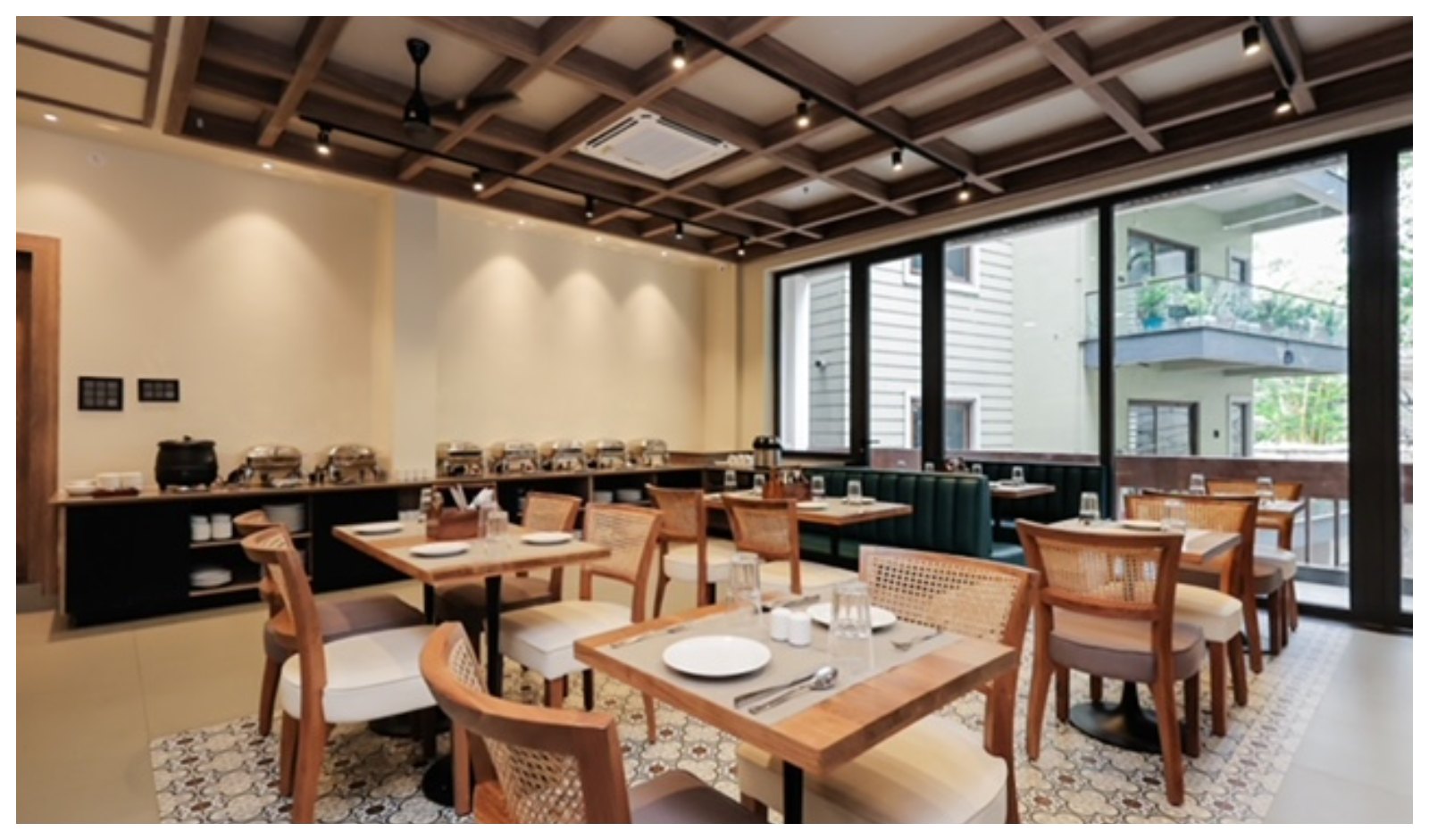
Themes as concepts are much established as a key facet in the F&B industry. The mood is then often set around the concept, making eating-out an experience worth savouring.
The theme of a restaurant can be inspired by anything to everything like memories, heritage, the latest trends or more. A design, therefore, should cater to a consumer, serving not only the aesthetic but also to the social and psychological attributes. Hence, the décor and interior design aspect becomes predominant to create the perfect setting for complete customer experience.
The objective is to most often grant an unusual experience of an offbeat time or place to its customers by appealing to their senses and imagination. Creating reality out of fantasies, a creative theme brings uniqueness to the sphere, enabling the owners to use a distinguished identity to establish their brand. Branding has a profound impact on the restaurant, as it boasts of the restaurant's story, attracting the target market and making it stand out from its competitors.
The interior design, however, is a diverse yet complex system consisting of various aspects including furniture, lighting, colour scheme, spacing, and other design elements. Each one of these aspects has a major effect on how a restaurant brand will be conceived.
The furniture inside the dining or social spaces saliently determines its overall style. The right furniture palette can establish an exceptional dining experience which when clubbed with the appropriate aesthetics and music, enhances the gratification of the patronage. Since, colour perception is capable of evoking emotions, it too plays an important role in reflecting the theme of the restaurant.
Further, lighting aids to set the mood for a restaurant, as the level, colour and types of illumination makes the first impression on a diner’s mind. It contributes significantly in defining the atmosphere to be fashioned and now often makes for perfect Instagram-able moments! Mood lighting usually depicts calm and luxury, while natural lighting creates a brighter and more casual vibe.
We, at ivpartners, engage in a broad selection of projects, ranging from large-scale retail entertainment to luxury private houses. With an industry experience of more than twenty years in building ideas, taking up challenges & steering direction through the course, have led the practice to deliver recognized hospitality projects across the country. One of our prominent projects, located at BKC, the coveted corporate hub of Mumbai, Punjab Grill - a Gourmet Fine Dining holds a vantage corner in the landmark Capital building. Present amidst other dotting diners within the precinct, the design of this restaurant stands apart with its exclusive ambience that renders the design with flavours of Punjab.
The concept pertains to a contemporary classic recreation of authentic flavours from the ‘land of five rivers’. Redefining the spicy Punjab cuisine and crafting a new paradigm in the delicate dining experience, becomes the underlying perspective for the design composition. Inspiration has been drawn from traditional craftwork of Punjab, the “phulkari” & “jaali”, which are interpreted in flooring patterns and panelled walls, mounted with tile motifs forming an intrinsic milieu of the central dining spaces. The Punjab Grill at BKC is a sheer corollary of dynamic space design and well-poised intricate elements that present the patrons of food with a regal dining experience enumerated. All of these constitute the component of a well innumerate theme for the restaurant.
We believe that it is a designer’s responsibility to outline a concept to create a wholesome ambience always keeping in view the needs of target customers. The patron’s choice is affected by not just what’s on the menu but also by the mood and character infused into the restaurant by a befitting theme.

Imagine stepping into a classic yet sleek restaurant in one of the most posh areas in town. It feels like stepping into a different world away from the hustle and bustle of the city. The space is carefully designed to provide a luxurious escapade to customers. Fine dining is a holistic experience that offers highly upscale and offers sophisticated services with the best quality food. Creating the perfect fine dining establishment goes beyond the general norms of restaurant design and is about being able to indulge every sense to create a refreshing and unique experience. Designing such spaces can be tricky but the key to solving the mystery of designing fine-dine restaurants is to maintain subtlety while creating huge impact on the customer.
Here are a few design elements that need to be deliberated over to create the best experience:
Differentiating Factor
The most important effect that design should create in a fine dining space is the sense of providing a new and different experience. It is vital for every such establishment to have a distinctive feature that is unique to them, which ensures regular customers. This can be in terms of a theme, a signature art piece or a new experiential factor. The restaurant should essentially have a personality of its own that sets it apart from the sea of other establishments in the area. This can be created by maintaining a design philosophy that carries through every aspect of the restaurant from the choice of materials to furniture to lighting. Themed restaurants especially, have to take extra effort in creating designs that hint at the concept without being blaringly obvious.
Colour Scheme
Colours play an integral role in defining the mood as each colour evokes a certain kind of emotion. For example, red or yellow are usually lively and energetic colours which are traditionally used in fast food joints while gold and white are generally associated to serenity and luxury. Thus, it is important to pick the right colour scheme to depict the kind of lavishness that a fine dining experience entails. A busy colour palette can often be a negative factor in designing such spaces as it evokes a sense of urgency to customers. It is important to maintain the same scheme throughout the restaurant so as to make the patrons feel at ease.
Lighting
Mood lighting is a very pivotal design aspect of fine dining restaurants. Apart from contributing to the mood and ambience of the restaurant, lighting is an important aspect of maximizing efficiency along with maintaining aesthetic appeal. Smart lighting can provide a way to create individual zones, thus, crafting a sense of privacy for individual tables. Lighting can also act as an added aesthetic feature with signature pieces featured in the center of the room or the lobby. Exquisite chandeliers and unique light fixtures can play an important role in enhancing the luxurious feel of a space.
Furniture & Seating Layout
Fine dining is synonymous to luxury and elegance and the materials picked out for the furnishings and floors of the restaurant space should depict the same. Materials like marble, leather and glass are some of the common choices that portray opulence. Such restaurants often have regular patrons who appreciate privacy during their time at the restaurant. Thus, it is important to have considerable distance between tables for each table to have their own private space despite being in a large common area. It is also better to not place tables near the entry, the kitchen or the washrooms as this will cause disturbance in the customer experience. Lastly, a fine dining experience is about luxury and comfort. It is important to ensure comfort despite the intricacies of the design of the restaurant. Seemingly irrelevant details like the proportion of height of the table to the chair or the material of the cushions picked out play a big role in providing comfort and a sense of generosity to the space.
Kitchen Design & Equipment
While the front-end of a restaurant plays a pivotal role in bringing in customers, the back of the house is key in retaining the customers and ensuring repeat visits. The kitchen needs to be adapted according to the theme of the establishment. A cultural themed restaurant requires certain specialised equipment to cater to providing a holistic immersive experience. The equipment inside should be in tandem with the menu presented outside to ensure quick and quality service of orders. For example, a Chinese themed restaurant would require large woks while a farm-to-table restaurant would require ample space for storage and preparation of fresh produce.
Creating a fine dining experience is about creating a massive impact through subtle elements. Design elements in such spaces have to create a distinct but cohesive picture in line with the aesthetic and mood of the restaurant. Fine dining restaurants today even have subtly personalised tableware and cutlery that ensures a consistent vision. Thus, through small but effective details, fine dining restaurants are designed to leave a strong underlying impact, helping them build their legacy & patronage.

Food is maybe the only universal thing that really has the power to bring everyone together. No matter what culture, everywhere around the world, people get together to eat – Award winning restaurateur, Guy Fieri said.
Cultural-themed restaurants have become a very important part of the restaurant business, today. In the internet revolution that we live amidst, we experience an environment that actively shares ideas and concepts. After the internet, one of the biggest influencers of depicting different cultures is restaurants, through their commitment to providing authentic, cultural food. As a result, the act of consuming food has transformed from being a simple necessity to an entire experience of its own. Restaurants today aren’t just designed to serve tasty food, but also to provide a holistic and novel experience. The creation of this experience starts from the very design of the restaurant, which aids customers in beginning their cultural journey, through their eyes. Here are the different aspects of restaurant design that needs to be considered, to create a well-rounded cultural experience:
Colour Scheme
Almost every culture has a definite colour scheme associated with them. For example, the Middle East is often depicted in rich hues of maroon, purple, and gold, while European cultures like Greek, are depicted through whites and blues. Thus, it is important to pick the right colour schemes for your restaurant design that defines your theme. From your walls to your furniture, it is important to maintain the same colour scheme throughout the restaurant, so as to not confuse the customers with too many ideas. Additionally, colours also have a part to play in psychology, with every colour evoking different emotions. Therefore, colours like red or yellow, which are busy and energetic, would be bad choices for a fine dining restaurant, but a great idea for a fast food service. Thus, make sure that your theme, form of restaurant, and colour scheme, are in alignment.
Seating and other vital furniture
Talking about colour schemes, another aspect of design that plays an important role in the experience a restaurant provides, is the materials utilised throughout the restaurant. It is always a great idea to source materials native to a particular region, to have a true representation of the local culture. Furniture with intricate carvings from local artists, is a small, but highly effective way to incorporate authenticity into the design. Additionally, there is a notable difference in the way people consume food in different cultures. For example, Arabic cultures often prefer sitting on low-seating, with plush mattresses and couches, while Parisian cafes usually have outdoor seating, featuring handcrafted wooden chairs. Some communities also believe in having meals as a community, and enjoy meals on long, shared tables. Thus, it is important to identify different eating traditions in your culture, and design the seating plan accordingly, with the appropriate furniture.
Kitchen Design
While the visual appeal of the front-end of a restaurant is very important to ensure customer satisfaction, what is also important is to have functionality and efficiency on the back-end of the restaurant, i.e., the kitchen. Different cultures use different forms of cutlery, utensils, and cooking processes, for cooking and serving the best food. Thus, it is important to understand the functionality of the kitchen space, in this aspect, to be able to cook quickly and efficiently, while maintaining the authenticity of the food. For example, large woks are an integral part of Chinese restaurants, while multiple efficient grills are extremely important in the European cultures. Certain specialty dishes like Tandooris in the Mughal culture, or Momos in the Asian cultures, can only be made through specific equipment, for the best results. Thus, the kitchen should be equipped with the best of tools and equipment, to cater to the different cooking processes used in a particular culture.
Serving Utensils
Lastly, the most effective way to infuse aspects of a particular culture into your restaurant, is through the right kind of serving utensils. Materials of such utensils play a significant role in showcasing different cultures. For example, South Indian restaurants often serve food in banana leafs, or plates designed like them. Japanese restaurants always feature a pair of chopsticks, for the customers to truly experience the Japanese style of eating. With the eating styles differing from culture to culture, a subtle but excellent way to integrate it in a restaurant is through the actual cutlery and serving dishes used to consume and serve the food.
To conclude, it is integral for restaurateurs and interior designers to work together, in cohesion, to create a holistic experience for its customers. The slightest of mismatch can be distracting to customers, and take away from the authenticity of the culture, that you want to represent. What is most important, however, is to truly understand the smallest details of a culture, and find ways to incorporate that, not only into the design, but the very philosophy behind it.
Like renowned American Designer Charles Eames said, “The details are not the details, they make the design”.

A great restaurant experience gets shaped by numerous aspects starting with something as simple as a warm greeting or a smile while being welcomed and ushered to your table. The concept of the restaurant introduced articulately and with élan to the guest paves the way for a personalised experience. The taste of food and home-like hospitality with a human touchensure a memorable meal. Therefore, it becomes important for restaurant designers to be in sync with the guest’s expectations and tap the creative potential of the restaurant to its fullest. With this context, here are some of the latest trends in the restaurant design industry:
Curated experiences – Restaurant design is not just restricted to interior design anymore. From creating the concept narrative to branding, designing logos, menus, uniforms etc., each touchpoint for the guests needs to be curated and imbued with a consistent theme for a holistic gastronomic experience. A case in point is the recently opened Port Muziris in Kochi, Kerala (the first Tribute Portfolio hotel by Marriott in India)– we have created a unique dining experience with eclectic influences where we not only designed the interior spaces, but also the logos, menus & uniforms with our team.
Informal luxury–Fine dining is now being redefined as quality dining. People want informality and to have fun when eating out, but still enjoy good quality food in an atmosphere that enables them to feel relaxed and encourages them to indulge. We see a lot of more interactive& unexpected elements like repurposed objects/ pop-art etc creating a more casual environment that fosters the ongoing trend of instagramable spaces for visual consumption.
Flexibility-It seems that most restaurants are becoming cuisine agnostic which means that they offer selected but varied choices from different cuisines to their well-travelled guests. From a design perspective, this allows for a more adventurous approach where eclectic and diverse inspirations can form a unique identity for the restaurant. However, one must be careful to make sure that it doesn’t result in a pastiche.
Social platform – Dining out is a social activity- People want to eat together in groups, with family or friends. A good restaurant design will encourage this. However, its also good to note that sometimes, people may want to eat by themselves or have a more intimate meal as a couple. It is important to understand this social behaviour and design for both single and communal seating experiences. For e.g.: At the recently opened Ummrao in the Courtyard Marriott, Andheri; we proposed generously sized tables for communal eating but also incorporated a high bar seating and corner tables to offer intimate dining spaces.
Explore Nature- Accessorizing with indoor plants and fresh herbs creates apeaceful and relaxing atmosphere. These emphasise freshness of ingredients on the menu and remind the guests to be more environmentally sensitive to their surroundings. Adding decorative accessories and botanical motifs from artworks to table linenprovides a sense of a natural retreat amidst the urban chaos. In addition, a lot of restaurants are now moving towards naturally lit spaces which instil a sense of well being and provide relaxation to the guests.
Local Stories: From the ingredients in the kitchen to the artwork on the wall, there are many opportunities during the restaurant design process to celebrate the local context. Using locally sourced materials and supporting craft practices is not only environmentally responsive but also goes a long way in establishing the authenticity of the restaurant in the eyes of the guests and the community at large.

Traditionally, restaurants were simple places providing tables for eating and aimed at serving delectable food. With social and economic mindsets moving beyond home cooked meals, the restaurant business started to flourish. Ultimately, this leads to eating out becoming a way of life and ending up a ubiquitous and essential part of our thriving eco-space.
Theme and Ambiance
As society evolved and adapted, the world got smaller. People travelled wider and further ensuring far greater exposure to diverse cultures and cuisines. Along with wanting good food at a restaurant, people started demanding a good experience too. Along came the concept of themed restaurants, where the design could narrate to users both the essence of space and the value of it. To ensure they get the vibe and ambiance of a space right, architects and designers work with an intensive list of requests from clients keeping the target market in mind – the seating space, circulation area, design scheme, colour scheme, furniture, acoustics, lighting elements are all but a part of the whole that goes into ensuring the optimum utilization of space to achieve a desired theme. Every detail, no matter how minor or major, contributes to the vibe of a space. Whether it’s the colour scheme or the materials used or even just the design of the doorknob. Designers use furniture, tiles, lighting and all the myriad other minutiae that go into creating a unique design to establish and maintain the scale and balance of a space while ensuring its users connect to and feel the intimacy and mood immediately.
Comfort and Functionality
It is important to tread the line between comfort and functionality while designing a space. An ample amount of seating space is to be provided in a restaurant to reach equitable profit margins without compromising on the utility and efficiency of the place. The layout planned should grant enough circulation space and elbow room to both, patrons as well as the staff of the eatery, to ensure an uninterrupted flow of service across the expanse.
Requisite thermal conditions and proper humidity control aid in infusing apt indoor environments, which is an integral parameter for imparting user comfort. Restaurants need efficient HVAC (heating ventilation and air conditioning) systems due to internal heat gains from primitive kitchen areas.
Lighting
Lighting elements play a key role in restaurant design. Decorative, safe, low-maintenance and energy efficient lights aid in regulating the aesthetic as well as utility value of the area. A general 150 sq.ft restaurant requires 25 watts of lighting but with sustainable lighting solutions upto 80% of energy can be saved. The types of lighting elements highlighting the current wave of restaurant interior trends embrace ambient, accent and mood lighting. While ambient lighting uses a minimum of 20 watts for normal functions, accent lighting utilises about 64 watts to highlight a particular area. The energy requirement for mood lighting may vary owing to its need to influence the experiential set-up.
Acoustic resemblance
A restaurant communicates through its acoustic arrangement just as much as its menu card. Depending upon the concept, a specific acoustic tone is awarded to every diner as silence is definitely not golden for most of them. If the spot is designed with the agenda of an actual conversation, it would have low-tempo music, whereas some resto-bars prefer live entertainment drawing patrons that have an affinity for music. Acoustic control measures are very important in restaurants promoting night-club culture, as reverberation (excessive reflection of sound) can cause immense harm to the users. With proper calculations, a sound decay is arrived at that aids in the selection of a proper acoustic material to be implemented. A minimum of 20 percent acoustical coverage of the total area, has to be applied for proper sound absorption. Therefore, material with sound absorbing qualities like fabric panelling, carpeted floors, soft furnishings and upholstered chairs are incorporated by the designers in their design style, to deliver a ‘sound’ composition.
Our modus operandi…
A Designer’s prime responsibility is to cater to both functionality and the outlining of a gorgeous, breath-taking space that diners flock to. The idea is to manage creating an unconventional setting with exuberance that marks its place in an ever-growing food industry. We, at Urban Zen, design and execute a vast spectrum of projects of varying scales and profiles. It’s mostly our intuition that leads to our dramatically different outlook with design and execution.
For instance in Flashblack, we have presented people with a ‘non-intimidating’ environment that portrays its inclusive ambiance through a warm colour palette and engaging graffiti. With a façade accomplished in pine wood, the structure announces the vibe of its interior from the inception itself. The artistic bar zones are differentiated from the relaxed lounge areas by its vibrant epoxy floor finish. With a back-lit display, the bar serves users with a tangy cocktail of experiences. A human graffiti sketched out on the wall gives the space an off-beat semblance; while the usage of wood and ambient lighting sprinkles the area with the requisite warmth.
Usage of mild steel frames and black tandoor flooring for the double height pockets, supplement the bar with a re-defined sense of modernism. The other part of the floor is divided into mellow lounges with dimmed yellow lighting to amplify the customer’s comfortable experience. Mirroring the grey tiled flooring in the soft furnishings, these spaces utilize profuse amounts of wood, evidently displayed as a part of the aesthetic pine wood frames and the instilled decor. However, the decorative pendant pattern of the ceiling, is what completes the charming layout. Serving the functional aspects of acoustic treatment, DGU glazing has been installed which also aids in creating the visceral ambiance.
Thus, irrespective of the genre of restaurant a designer endeavours to compose, it is imperative to decide on the dominant regulatory factors and deliver the aura and vibe accordingly, with precise focus on all facets.

Indian cities are now multi-cultural hubs catering to a clientele so well diverse and discerning, that they need to keep up with the growing desires and dreams of its people. The Food and Beverage industry is one such space which is exploding, not only to explore new culinary experiments but also ambience and experience. A restaurateur today has realized this and is more than willing to supply experience and try new settings and concepts depending on their budgets, clientele, and cuisines.
Gen X, today, is living in virtual reality - sharing their experiences and life with everyone. With the facilitation of technology, social media occupies a considerable portion of our daily routines. Social media plays a great tool to help bring out such restaurants, cafes, etc. in the limelight. Through time, preference increasing towards quality over quantity has led the setup of numerous eating-out places which serve exquisite food and offer a soothing ambience to enhance your gustatory and olfactory experiences. Often these posts reflect beautifully designed spaces where people live out of, work out of and dine out of.

Therefore, restaurants are one such place where photography has become important for the customers and for the reach for the restaurateurs. Creating these vibrant, experiential and aesthetic spaces have helped develop a two-way stream for both.
Restaurateurs are exposed to the new emerging design trends all over. They understand the concept of providing a fresh and exciting vibe. And, customers today not only look for a piquant dish on the plate but, also wish to take with them an experience. ''Experience'' being the keyword. There is nothing like sipping a hot cup of coffee or tea in a warm cosy space, beautifully developed rendering a homely vibe. The cherry on the top could be a great view through the window or a relaxing couch spot on the rooftop.
Aspects which impact the designing of restaurants for the contemporary times involve a holistic approach pointing out that along with food there is more to restaurants which adds to the 'unique selling propositions' or USPs.
Not long ago, one would have had a hard time finding and affording a restaurant of their own choice and taste. But, looking at the current growth, a number of spaces are being conceptualised based on all kinds of imaginable themes. This growth reflects the importance of bespoke outlets designed to cater to the crowd.
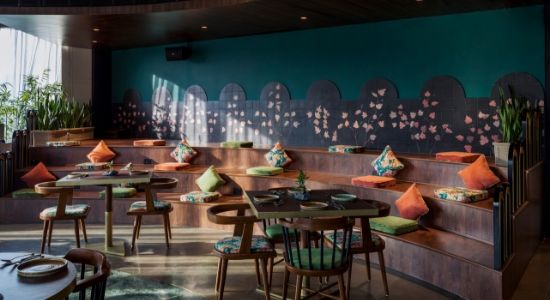
Lighting design and its strategy abundantly affect our perception of interior space. Natural light is being considered a foremost factor in cafes and brunch spaces. This has opened up a new avenue for chophouses putting forth the options for breakfast and lunch too, making them a go-to place. Dining and drinks for evenings, artificial lighting is added to create a bespoke ambience for a get-together or family dining.
Designs and concepts inspired by nature, providing an organic blend, with earthy tones of green, beige and blue bring the outdoor to indoor. Incorporation of reusable and raw materials are among a few popular themes gaining momentum in promoting spaces which are designed keeping sustainability as a highlight. This enhances the experience to be much more home-like and friendly, also prolonging the stay of your visit to the eatery.
Every colour has its own language; yellow signifies joy, happiness, and friendship, blue signifies peace, harmony and calmness, pink emanates romance, red says passion and beige symbolise pleasantness and simplicity. Each colour is thought through when being incorporated in the design whether it's for the walls, the furniture, the bar, or any other aspect of the interior to ensure it imbibes the story of the restaurant. Big clunky furniture has been done away with to make way for much more minimal designs to adorn the interiors.
Not to diminish the impact of furniture layout and the spatial arrangement, different setups are designed to serve a variety of clientele. This largely increases the engagement of people with the space reacting to interesting design themes of the mere seating layout of the space.
The extra-mile that we are expanding towards is to make these spaces more homely and comfortable, add workspace corners at new-gen healthy cafes or coffee shops, make them pet-friendly and provide an area where the new-age pop-up shows or networking sessions can be conducted. The idea is to provide a space where people of all ages can visit and not feel out of place.

As designers, we pull up our socks every time while approaching a new design project. It demands brand new energy, understanding the brief, the purpose, the cuisine and essentially reflect the restaurateur's vision of the brand. From there we orient a design philosophy to craft unique spaces.
Authored by Saniya Kantawala, Founder - Saniya Kantawala Design

The concept of sustainability has evolved from being simply a duty to a conscious and deliberate effort in every industry in the world. While the world grows in population and therefore, demand, people now also becoming are more aware about the environmental, social and ecological impact they are creating through to their actions. The need for organisations to turn to sustainable practices is thus now a necessity for their survival in the market.
The hospitality industry, like every other industry, is also beginning to turn towards sustainable practices to make room for the concept of “green consumerism”. The hospitality sector traditionally partakes in a myriad of non-ecofriendly practices through high energy consuming HVAC systems, fuel, light and other power-intensive needs. Waste generation in the hospitality industry is also high due to disposal of outdated furniture, equipment, appliances as well as simple elements like bulbs, paper and batteries. The need for the industry as a whole to turn towards greener practices has never been more important.
Over time, hoteliers have begun to realise that the benefits of shifting to sustainable measures are higher in the long run. The biggest long term advantage to the industry by shifting to sustainable mechanisms is the reduction in cost. Hotels are some of the highest energy consuming establishments with 24*7 lighting and air conditioning requirements. Through the utilisation of energy conserving appliances as well as the smart incorporation of natural light and ventilation into the hotel layout, hotels are able to cut down on a substantial amount of operational costs, but a major chunk still remains. While cost savings are a driving force behind decisions regarding turning to sustainability, economic incentives also play a big role in the implementation of sustainable measures in the industry. Government’s support towards the green movement is showcased in the form of tax deductions and quick regulatory permissions granted, among others. Apart from this, considering the growth of sustainability has become a trend in the market today, such measures are often seen as a way to promote a positive brand image. Especially by catering to the “woke” millennial generation who are environmentally and socially active about their carbon footprints, sustainability in the industry is perceived as a great point in favour of the brand. This eventually leads to greater hotel profits in the long run.
Earlier, the belief was that to become ecologically sound was an expensive initiative and customers rarely cared about the sustainability measures of hospitality establishment. However, with people becoming more and more aware about their footprint on the environment, both these notions are now a myth. Sustainable measures arenow implemented from the grassroots of a hospitality project through the hands of architects and interior designers. This has led to some very interesting trends in the industry today. The most prominent trend is the usage of local materials instead of importing them to reduce the ecological footprint. Designers now use natural and locally available materials to reduce their strain on imports thereby also providing a more holistic experience to the project in terms of depiction of culture. Customers get a better feel and sense of the place which they are visiting, hence leading to an enhanced overall experience. Apart from natural materials, designers now also use natural ventilation to reduce the usage of energy consuming devices like air conditioners or fans. Through the utilisation of big windows and intelligent placement of vents and openings, designers have shifted focus to the importance of proper cross ventilation instead of sole dependency on electrical appliances. Large windows also allow ways to capture the natural light for illumination over usage of electricity for the same purpose. Switching to renewable sources for energy is another way to bring sustainability into the projects. Intelligent combinations of different forms of unconventional energies can not only supply energy but also add to the aesthetic beauty of the project. For example, solar cells can be utilised to design a novel greenhouse in the main garden of a resort. Designers and architects have had to think out-of-the-box in order to reduce the footprint left by their designs and cleverly incorporate sustainable measures into their layouts all without compromising on the visual beauty of the project.
To conclude, the hospitality industry has three main stakeholders—the customers, their employees and the government—and being sustainable gives them a way to provide a superior service while reducing cost without compromising on the feeling of luxury to any their stakeholders. To the customers, it provides a superior experience through an immersive cultural experience without uprooting the environment around them too much. To the employees, sustainability imbibes in them a sense of ecological responsibility, which motivates them to be more productive and engaged in their jobs as well as carry these progressive ideas into their personal lives. To the government, sustainable measures through this industry act as an example to impose basic sustainability measures in other industries of the economy.

Anirudh Singhal, founder of Speedx Bars talks about why it is important for restaurateurs to hire a bar designer.
Nowadays, there is more to a dining experience than just a meal. With the rise of cocktail culture in the food and beverage industry, an extremely important factor for restaurateurs to increase sales and profits, for their restrobar, includes an impeccable bar design.
As per various studies, it is stated that a well-designed bar layout not only increases profits and efficiency at a bar but also boosts the bartender’s morale, thereby, providing quality outputs making it extremely important for restaurateurs to hire a good bar designer.
Previously, bars were designed by the kitchen team, leading to various problems - bartenders would move to and fro from the kitchen to stir up cocktails, would spend a lot of time fetching ingredients and cleaning the counters, increasing service time and lowering the conversation duration with customers. This often led to a lack of knowledge of the intricate details, diminishing the overall experience for the patrons.
With more focus on the beverage industry, restaurateurs must realize the importance of a good bar, hiring a designer who implements new innovative bar designs, thereby, evolving the equipment matrix.
Must Read: Enhancing The Customer Experience With Quality Bar Designs
There are various factors a bar designer could help the restaurateur decide, such as
- whether the restaurateur wants bartenders to use multiple workstations
- how many bartenders will be working concurrently
- which spirits the bar would include
- how much space the restaurant has and so on.
These points will extensively help the restaurateur to make well-informed decisions about the bar layout he/she wants to incorporate.
A good bar design redefines the way bartenders work - increasing the speed at which drinks are made leading to increased efficiency and output. This, in turn, would offer unmatchable quality and sales bringing the best out of cocktail curators providing great innovations to the beverage sector.
Bar designers make sure bartenders get to showcase their craft efficiently, permitting them to work effortlessly and promptly as everything they need would be provided at an arm’s distance.
With an increasing demand for innovative cocktails in restaurants, the number of ingredients stored behind the bar keeps growing, making it important to keep space as a priority while designing a bar to incorporate both storage and room to move for the bartender. A well-built custom bar can maximize the beverage output, double the efficiency and speed of the bartender leading the mixologists to take more complex drink orders giving customers an enhanced cocktail experience.
There are several features that make a good bar, for instance providing a good quality drip tray would enable the bartender to keep their worktops clean and assist in creating great visuals whilst the cocktails are being made. This would encourage the bartenders to prepare their drinks on these drip trays, so a guest can view and appreciate their skills and at the same time create a visual product offering to other guests in the bar.
Also Read: Bar Equipment Design Trends For 2019: Slushies, Tipples On Tap
Speed rails are a key element in the bar as well. Designing speed rails should be done in an innovative and efficient manner. Adding curved corners helps in avoiding an accident in a high traffic bar and the padded rails are useful for less sound while placing a bottle back.
One may notice, in many bars across different cities, the bartender is quite far from the counter top to where the customer is. This happens because of deep equipment and counters between them. Therefore, it is very important for the bartender to make sure that the equipment is kept to the bare minimum depth and offer standing curves in the equipment, where the bartender can really get close to the guests, whether it be to interact with customers casually or to get the orders right. Building rails in a curved design allow the bartender to get closer to the customer while interacting.
Hiring a good bar designer is highly profitable for a restaurateur as a good bar would benefit not only the owner but the clients as well, creating a bar that will pay for itself!

Why do people waste time if it is money for them? Or rather why shouldn’t they pay for it while get other things for free at least food, which is a love for most of us. The Minute Bistro, India’s first do-it-yourself café at Bengaluru that charges for the time spent not food, by former restaurateur Enayet Ansari, brings the Russia-born concept called anti-café to India. It’s ‘time’ to bump into India’s first Anti-Café.
Share your entrepreneurial Journey and what led to the birth of your brand?
I ran a restaurant for the last around two years where I had problems with my staff. Moreover, our menu was quite expensive. I tried reducing the price, but that didn’t work. I felt like cheating to customers. So in October last year, I thought of giving back to them not by charging for the food but for the time they spend, that is, on pay per minute basis apart from offering lots of things like play station, books, magazine, 55-inch TV and WiFi for free and yet making sure of churning good profit.
How focused are you on designing and seating part of the restaurant?
The cafe is 2,500 sq.ft in size, and there is lots of greenery inside. The interiors are done by Revathi Kamath, one of the top landscapist in India. The seating capacity is 60, and the charges are Rs 5 per minute. We have got planter boxes in most of the walls and second-hand guttered pipes painted. This is of very low cost yet looks beautiful like a rooftop garden. It is also a great co-working space.
What are the challenges with growing your business – i.e. maintaining standards, brand integrity, customer experience etc. and how have you met these challenges?
I still have to face the hurdles. Since most of my offering is standardise I don’t really need a skilled chef to put it together. Customers feel the space is there and they just love spending time playing board games, having the best coffee at their convenience.
Can you tell us more about your business operations from the standpoint of Loyalty Program, technology (Hardware & software), raw material sourcing and talent recruitment & training?
We are working on building an app specific to buying time at The Minute Bistro and once the app is out it will be easier to track all customers and stay in touch with them ( since all customers are micro tenant of the space ) home outside home. And as far as raw materials are concerned, they are all standard items coming from the vendors.
How does the concept of pay per minute work? How is the response so far?
The response is slow and gradually increasing. Since I have not done any kind of marketing (just to test ground) we are very happy with the whole headache of staff , low wastage, higher revenue , no stealing etc.
What is the average duration by the customers’ at you cafe and the average price break up?
45 Minute to 1 hr (breakfast) (8 rupee a minute ) 1 to 3 hrs during the day ( 5 rupee a minute )
Do you have a growth targets for the next few years and can you reveal any strategy for how you intend to achieve this?
We want to be in each city in the next 5 year. Since this model of cafe bistro is tension free of the staff and investment is low. After we standardise everything I am sure we can sell our franchise easily all over India. We just starting this initiative cal EAT TO FEED, PAY FOR TIME i.e. every 15 days 2% of our profit is shared with the nearest orphanage or old home or needy. This initiative will help us with constant pr and even our customers will be glad that we are putting their money back in the society.
How are you building on quality at a time when your model is based not on food but time?
We are offering 31 items on the buffet to eat, lots of board games to play e.g. chess, monopoly , etc. We offer free high speed wifi, play station, lots of books and magazines and many more things to do as customers like.

Umang Tewari hails from a family of real estate. After doing his MBA from UK, it was food and music scene that inspired him to venture into the restaurant business. Tewari has also worked with cafes in the UK for Experience and Exposure of the restaurant trends giving birth to a dream that inspired him to open his own restaurants.
How the inspiration has come?
I believe that if you are passionate about building your dream, there is no stopping. Hence, I got this into field with all my hard work and dreams, with the family support; I have been able to create Mark. I opened Oxygen in 2002 that helped Delhi embraced Lively Nightlife culture. Oxygen changed the way of Nightlife in Delhi. It was the most successful club of that time.
What were the initial challenges that you faced in bringing some of the good concepts in India?
I had lot of expectations from myself, and we never compromised on design concepts. We spend good initial months making sure that we crack good design concept and location. I was particular about the location preference and concept. The only challenge was perfect execution which we make sure to attain.
How do you differentiate your restaurant from others in the same forte?
Our Existing brands are plethora of different unique concepts. While OTB is a place that derives an inspiration from Street food across the Globe, Vault Café derives its inspiration from Colonial world. Vault café is a vintage industrial ambiance visualised as a storehouse of British East India Company. The transformative café par lounge bar has been visualised with rustic interiors architecture with colonial influences to bring in the theme of the Colonial era. Vault is hyper thematic with expressive décor, state of art sound and light and a mouth watering F&B overlay to complement that. On the other hand, My New Venture Garam Dharam is surely first of its kind in Delhi. Fun, Quirky, Lively, Innovative & Foodies Paradise inspired from Veteran Actor Dharmendra.
Who do you see as your competitors in the market and why?
We don’t compete with anyone. I have many brands in my own kitty. We keep competing within ourselves. Whole energy goes in making sure that each of our outlets is performing well and is different from each other.
You recently joined hand with actor Dharmendra to open ‘Garam Dharam’. Tell us about the partnership.
I am foodie and I love Indian food. I thought that there is derth of place in Delhi to have good Dhaba food. At the same time contemporary outlets with Moder interiors is what gets accepted widely. I thought to blend both these needs and that was the origin of Garam Dharam. We Met Dharmendra Ji theough one of the friend, and we told them about Dhaba food outlet which we want to open. Dharam Ji being foodie was also inetersted, and showed interest. Then came the idea of Bollywood Dharmendra themed bar. He gave us the inputs in interiors by letting us know his favorite movies, dialogues and more. Dharam Garam, Dhaba Te Theka is place for all those who enjoy simpler elements of Life- Good Food and Good Music.
What is the contribution of Dharmendra in the restaurant? Is he given only his name to operate or does he hold some stake in the company?
Dharmendra Ji was involved in letting us know about his likings which we contributed in decor of the restaurant. He also gave us his pictures to decorate the wall. He has both his personal and profesisonal shares in Garam Dharam.
Tell us about the funding scenario at your end?
We under our company Big fish ventures are raising around 200 crore rupees through venture capital funding. The start-up venture which caters to café dining and hangout segment of the market and runs premium dining lounges like Vault Café, Garam Dharam is mulling to launch new brands like Public connection, Oh My god (OMG), Junkyard, Three Peg Down over next three months. With a host of brands in operation and new launches in the pipeline, Big Fish ventures clock sales of over 50 crore in FY 15-16 and 150 crore in FY 16-17 respectively. Our team will create, build and operate over 40 outlets by FY 17-18 under brands created by us. Each outlet will be known for its prime location, unique concept, world class food quality and unforgettable service experience. Additionally, we plan invest over 200 crores in building our outlets and hope to register a gross sales of over 500 crore by FY 18-19.
Your restaurants are a mix of global cuisine and rustic designs. What are the design elements that you keep in mind while designing each of the outlet?
As a Restaurateur I make sure that each restaurant of mine is different from the other. I feel food and interiors are the only two things that brings customer back, and hence they need innovation. I play on the concepts and that’s how we make sure each outlet has different interiors. Also because our outlets have high re call value, we make sure that there is no repeated design element in either of our outlets.
It was in news that you are also planning to open around 6-7 restaurants in 2015. How many of them are actually operational now?
Yes, the plan was to open around 6-7 restaurants in 2014-2015, and I feel we have been successful in achieving the target. I opened Vault in 2014 end, then Garam Dharam followed by Junkyard and Public connection. So, four are operational already, and the other 4-5 is due for this December.
Tell us something about your expansion plan?
We have OMG, 3 Pegs down, Courtyard and Bandstand. OMG is located in CP as well, Spread over 8000 sq ft, this place is designed around the concept of hell and heaven. 3 pegs down is Microbrewery coming up in Saket. I am also coming up with two more outlets in Aurbindo Marg, Bandstand and The Courtyard, Bandstand is Spread over 4000 sq ft, Its been designed in retro way and will take Music events of the Capital on Next level. Courtyard with the space of 15000 sq ft is again unique food, drink and Music place. Not only this, we are expanding to West Delhi with 2 coming in Rajouri Garden and 1 in Punjabi Bagh. Then, we have eyes set on International market where we plan to start one in Dubai, Canada, China and more. There are plans to open Garam Dharam in Rajouri Garden. Biggest Vault is soon to hit Punjabi Bagh, and then we have plans to open Junkyard in Saket as well. I have already signed two properties in Mumbai as well. I think 2016 will see atleast 10 restaurants coming from my side.
What is your revenue as you hold some of the good restaurants in your bouquet?
We invest 3-4 crores in setting per outlet and our return on investment is atleast 30% per anuual year.

For today’s restaurateurs, finding the perfect location is the biggest challenge either to expand or to relocate. To retain new and old customers, restaurateurs need to identify some basic criteria, which create an everlasting impression.
The process of choosing a new onsite location includes detailed research, objectives and price to make sure that it is good for the business growth. Location is the foremost decision made by restaurant owners in terms of real estate. Restaurateurs first go through proper research and identify the potential site before starting or opening a restaurant. Then, they should organize the same plan and use the resources efficiently. Finally, they maintain the efficiency of the restaurant by continuous inspection, testing and verification.
“Convenience, parking, competition, proximity to shops for supplies are few things that we keep in mind before selecting a restaurant location”, shared Nathan Harris, Owner, The Hole in the Wall Cafe.
Design Strategy
In addition to venue, menu also plays a vital role, as it depends on the place and diners who visit the restaurant. Before the quality of food and ambience, it is the accessibility and location of any restaurant that attracts the guests. Concept, food quality, service and economic shifts are some of the other factors that adds to the overall success of the restaurant.
“The design will always have elements that guest may have not seen. It is very important to offer new flavours if you start a restaurant, but it should be according to the taste of the guest”, pointed Gursimran Singh, Managing Director, Downtown Group of Companies.
On the other hand, Harris stated, “It drives the customer growth in the long run. Something that stays fashionable and innovative over a long period of time and is obviously the goal without appearing too niche to your target audience. It's got to tie in nicely with your target audience, keeping in mind that your strategy is long term and can be easily tweaked down the line”.
Other factors
Location can provide adequate sales and profit, but other things are also equally essential. Technology is one aspect, which is required at every stage. To make the site perfect in every portion- scientific, demographic and psychographic information are required. Safety is also important while selecting a site. Another key point is to develop an efficient and friendly team.
Nevertheless, money is always needed to start or expand a business. At the same time, restaurateurs look out for areas that have tax incentives. Selecting a site around malls is always preferred. “We normally look at- if there are malls or multiplex nearby, have no existing restaurants and the kind of residential place around it”, added Singh.

Gone those days when clicking pictures from camera were suppose to be an art of photography. From the time, the concept of selfie has come in India; people have become so much self-obsessed in taking photographs wherever they go. And, how can it be left while out on a foodie trip.
Riding on food porn
When we visit a restaurant, well presented plates of food are placed in front of us and we immediately take out our smartphones to snap a picture and post it on social media with tags and description.
These tempting pictures of food promote many people to try out for new restaurants. With this, many people rely more on the number of reviews. As online content increases the demand, restaurateurs also prefer this area for the promotion.
“This is called the branding inside the restaurant. Now, it has become a trend to go inside the restaurant and take selfies and post in social media. Social media is amazing; it can make or break a restaurant. It has a good pace for the restaurant. This is an in-house branding as photo is an easy way to promote a restaurant just like mouth to mouth” pointed Varun Puri, Owner at IMLY
Not only technology and digital media but also the selfie craze has helped the restaurants to grow. The photographs provide awareness about what the restaurants are offerings in their menu. At the same time, the offline modes of marketing are too expensive for the restaurateurs and that with a low yields.
Marketing it right
This is one of the ways of doing marketing as it is extremely important to increase the outreach and create a buzz amongst the people. It further helps in online marketing also as lot of people post these photographs on Face book, Twitter or Instagram doing a free advertisement for these restaurants. And this way customer gets all updates related to daily menu, events, deals etc through these platforms.
“We are creating some ‘Mad’ deals as the name suggest. The unique feature is the ‘Mad Selfie Corner’, which is inspired by the raging trend of selfies these days. We provide some crazy props for people to use and click awesome memorable selfies”, shared Vikram Rana, Owner of Caffe Mad House.
It is the design that attracts
Restaurateur’s now-days put lot of efforts on the design elements to make it appealing in front of the customers. They take care of things like colour, texture, space, trends and even the theme of the restaurants. On the same note, Seep Prateek Gambhir, Owner, Mumbai Matinee pointed, “With photo friendly atmosphere in restaurants is the new thing. And if you are picking a theme then photos do the job and save space too. And in our case Bollywood is theme-so vast-wall graffiti or any other art wouldn't have helped to cover every personality who has contributed towards making this cinema a legendary experience for us”.
Selfies at the restaurants today gained huge popularity mainly among the Millennial. As there is a saying photos speaks million of words than a person, so the restaurants brands use this way to get identified in the middle of the other guests.

Junkyard Cafe is a new concept cafe in town with an explosion of colour and art. As the name suggests, each and every corner has been built with some junk or the leftover items complementing the restaurant’s name.
The ambience is bright and lively with a welcoming vibe. Designed in a traditional way, the seating arrangement is done with art works on furniture and decor.
In addition to everything else, the upbeat music and splashes of colour immediately put you in a good mood. Spread across 13, 000, sq ft, Junkyard Cafe derives its inspiration from Junkyard, which is a yard used to Store Junk. It brings out the Raw Junk world, which is grungy, contemporary and at the same time very exclusive.
Junkyard Cafe has many unique elements with them. Umang Tewari, Owner of the restaurant commented, “Junk here is funk. “Right from the first of its kind interiors and art installations which are made using Junk Materials like tyres, barrels,
parts of car and trucks, old radios, TVs, chipped board furniture, beer bottles, and old junky speakers gives The Junkyard Cafe, a junkyard look in every possible manner.”

Hyatt Place, Udyog Vihar is an ideal place for both business people and travellers in Gurgaon. Known for its spacious meeting rooms which are perfect for small corporate and executive meetings, training classes or group gatherings, it is located in Gurgaon, 20-minute drive from DLF Cyber City, MG Road, City Centre and major commercial hubs.
Hyatt Place has some phenomenal features- a 24/7 Gallery menu tendering freshly prepared meals with a variety of local and regional specialties.
The 24/7 Gallery Market tenders grab and go items from freshly prepared sandwiches and bakery items encompassing pastries, cupcakes, water juices and soft drinks. The gallery market is perfect for quick bites to feel refreshed and recharged. The coffee to cocktails bar is the ideal place to meet and enjoy evenings with friends and colleagues while relishing a wide range of innovative cocktails, international and local beers, wines and premium spirits from across the world.
Gallery Café has an overall seating of 148 seats which focuses on being giving a feel of casual and open. It has a subtle combination of PDR, indoor and outdoor seating, with a blend of lounges, sofas and chairs.
Hyatt Place also has a concept of lavish open kitchen with equipments imported from Middle East and the unique flexible private dining rooms to cater groups around 10 – 30 guests are the key design elements contributing to the rich ambience.
The architecture allows plenty of natural light during the day and splendid views of landscaped lawns. A uniting motif element is replicated in the detailing of selected jaalis, etched glass and fabric upholstery which enriches with the warm tone of the stone and carpet flooring, cladding and pattern timber backdrop works.
The interior design was led by Christian Merieau, MD, Samuel Creations, Dubai and day-to-day coordination was handled by their Sr. Project Manager, Khaja Mohammed Javed. Entire material selection is guided by the interior designers. Wooden partitions, marble-honed crema marfil tiles and stone clad buffet counters are part of the finishes.
With P Kauffman fabrics upholstery, Taiping carpets flooring, selected curtains and artworks the highest quality of materials has been used.
The hotel boasts of 176 guest rooms that come with modern amenities catering to the needs of business and travellers. Each room features minimalistic decor, contemporary furnishings fused with a mix of modern design including natural wood finishing and textured glass.
The other in-room facilities are flat-panel HDTV, a comfortable cozy corner sofa-sleeper, hairdryer and tastefully designed bathroom. The guests can also relish the swimming pool, parking, laundry services and Wi-Fi during their stay.
It has high traffic hours at all the meal periods, primarily during breakfast with all resident guests and during dinner with fair mix of both resident and non-resident guests.
The rough estimation of the hotel which delivers facilities in addition to designing, finishing, furniture, equipments and furnishing expenses is upwards of Rs. 6.5 crores.

Pamphilos means "Friends of all", is a casual dining restaurant located at GK-1, N block Market and is spread across 3800 sq feet. It has two floors including an open seating area, creatively visualized the place to resemble a homely and ornate setting with clean lines and minimalistic design philosophy.
Pamphilos has a different but beautiful décor. The decor and feel of the place is great, especially the terrace which will be amazing for any weather. It is quirky, elegant & beautiful.
The wall art is perfectly done. It describes the personality of women. That is why we have so many feminist artworks and by keeping all these things in mind, we came up with this concept.
Designed by Shiren Kaur, the seating arrangement is done with mix and match of everything. It has couches, sofas as well as fine ding table. For instance, if you want to have coffee you have coffee table, for fine dining you have table for three four and even 12. It has 75 seats in total and very comfortable and relaxing.
The terrace area is amazing with colourful potted plants set against a white background. The place comes alive at night with brightly lit lanterns lending an enchanting aura to the whole space. It has highest traffic is at night during the weekend after nine. “We have music-themed evenings every night, including live gigs on Wednesdays and house music on Saturdays” shared Sourav Deshwal, Owner at Pamphilos.
The menu is vast and the food is certainly appetizing It is a mix of flavours around the world, though the main emphasis on European cuisine. “We are more towards European cuisines. Earlier we have 40 items in our menu but now we have 80-85 items in our menus as per the recommendation of our customers. And also, it changes within three to four months duration” pointed Deshwal.
One crore is the budget for this outlet. A lot is paid to the artists and done many expensive chandeliers, he added.

Earlier, primary existence of many restaurants was to lay out a sumptuous meal, but with changing times it progressed to diners seeking splendid dining experiences, which could be as varied as adventure, serenity, concept and theme along with a nourishing food palate.
Rightly said, first impression makes a lasting impact, and why not? Unmistakably, the potential diners and customers come in touch with the ambience of the restaurant first; then with the food.
And as we have seen, in the last one year the global restaurants which have entered India has shown as much flair and innovation in their architecture and interiors as they have in serving their cuisine. From Burger King, the Miami-based burger chain to Wendy’s, the Ohio located burger chain, Taco Bell, known for its nachos and Mexican food and Barcelos, the South African Casual dining eatery, each have communicated the right ingredients of decor and design at their outlets.
Taco Bell, the Mexican restaurant which opened its first outlet at Ambience Mall, New Delhi has a contemporary design inspired by its Mexican-style cuisine and the brand’s California-based heritage.
“The outlet depicts an urban fresh look which brings to life the brand’s belief in freshness and made-to-order food which can be seen from the open kitchen,” shared Ankush Tuli, General Manager, Taco Bell & CFO, Yum Restaurants India.
The 75-seater Delhi restaurant has a vast variety on the menu with international classics like Crunchy Taco Supreme, Crunch wrap and Burritos as well as the Kathitto which has been developed especially for India, to suit the local palate.
Commenting on the same, Gaurav Burman, Director, Burman Hospitality Private Limited, which holds the master franchisee for the restaurant in north of India said, “Our sincere aim is to deliver an outstanding dining experience that couples exciting food with an inviting atmosphere all at an immensely affordable price.”
Meanwhile, Wendy’s, the Californian burger chain which opened its first outlet in May 2015 at sector 29, Gurgaon has chosen a different model to serve to the demanding Indian taste. The restaurant chain designed in a casual dining atmosphere has opted for table service while delivering food to the customers.
“We’ve worked hard to create an ambience which is seen a notch above what the market has seen so far from QSRs. We’ve focused on things like different seating formats, the music we play, lighting etc. to ensure we offer a better food experience. We serve our food in proper crockery along with table service and all our food is cooked only when you order it. So, there are several differentiators which will make us stand out,” believed Sanjay Chhabra, Director, Wendy’s, India.
Likewise, Barcelos, which is also operating under casual dining theme, has opted for a Portuguese theme after a town in Portugal with the same name. The interiors and designs of the restaurant reflect the Portuguese way of living and dining. “We have focused on the modern and antique art for the interior of the restaurant. The Portugal influence can be seen through the paintings and antiques of the restaurant,” pointed Rohit Malhotra, GM - Operations, Barcelos India.
The chain which has kept the global design in its first outlet is also looking for more rustic and modern design for its next outlet. Located in an area of around 2000sqft, the restaurant gives a cosy and comfortable experience to its customers. “I believe that 25 per cent to 30 per cent contribution to the restaurant business come from a restaurant’s interiors and its ambience,” added Malhotra.
Hence, we can see that it is the palate of ambience and visual interior designs on which the restaurants serve food and fulfil the appetite of their customers.

By invite: Sanjiv Malhan
“Design must reflect the practical and aesthetic in business but above all… good design must primarily serve people” – Thomas J. Watson
The restaurant design patterns are changing with time as contemporary urban designers realise this purpose of design more than ever and are innovating by the day to simulate the tastes and imagination of customers.
The décor of restaurant spaces is fashioned by restaurant designers such that it compels the customers to revisit and stay long for these experiences. From the rustic, raw and authentic looks to the shift in textures mark the trending of industrial design and style in interior design industry at restaurants.
The industrial designs tend to impact the visual strongly and aid in the farm-to-table experience for the customers. Be it the purposely created dents or the natural look of wood-work and metal-work or the high-spaced ceilings with exposed beams or the historical brick-work; a host of spectrum of design elements such as adopting industrial lighting, exposed plaster, reclaimed timbers and glazed brick tiles have made it in the trending-now list of top-notch designers. These design elements which take you to timeless spaces or futuristic experiences are in vogue.
The upscale restaurant designs emphasise on texture more than colour these days in interiors for their exposed brick walls. Great attention is given to materials in their natural forms creating nostalgic or timeless experiences for the customer. Exposed brick work walls mark the beginning for an artisan aesthetic experience from where the rest of the interior space can be maneuvered.
Intricate brickwork designs add an exquisite and original architectural appeal to the interior design. And the industrial designs blended with black metal or piping or reclaimed wood-work bring out the rustic feel with creative repurposing. Authenticity in interior design is one of the top trending in-style must in the restaurant design market. Alongside authenticity comes sustainable design. Authenticity of the food palate as much as of the design element!
The designers play with the geometrically shaped fixtures and their orientation to showcase the newer artistic interior designs. This marks a shift in the industry to move and seek new styles to stand out from the crowd.
This can be evidenced in the cutting edge restaurants and pubs which have introduced strong, hard edged geometric patterns. These current trends are moving towards an increase in zoned spaces to create interest and movement around eating space; also to experience the uniqueness of the restaurant spaces creating desirability and longing in the customers.
And, as we know, sky is the limit for designers who are picking up the pulse and needs of customers and blending it with their offerings and finding much appreciation. As Milton Glaser said, “To design is to communicate clearly by whatever means you can control or master.”
About The Author:
Sanjiv Malhan, an Australia-trained architect and principal at OFFICE FOR INTERNATIONAL ARCHITECTURE (OFIA), is passionately eloquent about his core beliefs and philosophy: “It is every architect’s bounden duty to take to heart the potential that our profession offers. And use every opportunity we get to explore this unique intersection of spatial artistry, technology, human civilization and above all, imagination.” These are the keystone beliefs that inspire Mr Malhan and his team to go out and create the spaces they do. “Mapping a client’s brief to a space and then using the tools of my profession to go out and exceed it, each and every time, is a given. Mr. Malhan’s training and experience enable OFIA to assemble an unmatched team of international and local experts to deliver the most challenging tasks and projects.

When Zorawar Kalra, who owns and operates restaurant brands like Masala Library and Made in Punjab decided to take the Indian culinary journey to the fusion level, nothing best suited him other than opening a modern Indian bistro- Farzi Café.
The café is best described as a fun-filled Indian café, where guests will experience the finest modern Indian food infused with a generous dose of Indian architecture and influences.
Farzi Café is the perfect blend of modern culinary techniques of molecular gastronomy and presentation styles offering a high energy dining experience.
Farzi Café together with its partner designer, ‘This Is It Designs Pvt Ltd’ has designed to showcase the strength and robustness of the brand, while being bold at the same time.
The restaurant with its custom-made Parisian chandeliers and wall washers or focus lighting along with floorings of laminated wood, is trying to capture the Indian youth in the right way and has won several awards in just a few months of its opening.

There are restaurants that swear by their fusion and experimental cuisine. There are kitchens that boast of its chef’s bold artistry, and then there are places that are fabled for their lush green foliage and pristine atmosphere. The Hiatus is an amalgamation of all three. Located in the heart of South Delhi, it is a voguish dining destination in the capital’s elite Clarion Collection-Qutab Hotel.
The first hospitality venture of GB Fine Dine & Hotels Ltd under the leadership of Jalandhar based entrepreneur Saurabh Bhandari, The Hiatus was conceived in December 2013 with a concept of progressive world cuisine and the rare molecular gastronomy to dish out an ultimate luxe and opulent dining experience.
The name ‘Hiatus’ connotes pause, an opulently peaceful arena to take a break from the fast life of the city and get rejuvenated and refreshed to hit it back.
At The Hiatus, the journey of discovery begins from its entrance that is complemented with a stone path surrounded by a charming green space on one side and a clear pool on the other. The restaurant is a compilation of different shades and moods.
The opulence starts from the H-Bar,which is an urban bar housing a fair collection of international spirits and serving an innovative range of cocktails. The intimate seating and warmly-lit interiors with walls adorned by wine and cigar racks provide for an ideal setting to the modern-day globe-trotting gastronomic enthusiast.
The kitchen at The Hiatus swears by its world-class techniques of food preparation and in-house ingredients. There is a special garden to cultivate herbs. Meanwhile, the delightful dishes served on the platter are mastered by the chefs through latest science and technology. For instance, the meat and vegetables are cooked using Sous-Vide, a dehydration technique by which the water within food is evaporated at a low temperature to let the food remain raw and retain its original nutrients. A popular technique in the US, Sous-Vide has recently entered the rare Indian kitchens. The main attraction in the kitchen is a long table called, the Chef’s Table. The table seats the chef’s guests for a special customized meal.
The Dine-In-Cellar at The Hiatus is a private dining hideaway that demands prior reservations owing to its tailor-made menu complimented with an impeccable selection from the exhaustive wine list – a duet that propels the senses of gastronomic aficionados, on a culinary journey across the world. The uber chic room comprising hideaway walls stacked with wines surrounding a huge vintage style marble table and chairs rooted at the centre is an ideal spot for privy affairs.
A symphony of great food, ambience and stylish service, The Hiatus poses as a shining star in the city’s lifestyle skyscape.

By invite: Sanjiv Malhan
What makes up a great restaurant? In short; a great design, great service and great food equate in shaping a great restaurant.
“Ideas are refined and multiplied in the commerce of minds. In their splendor, images affect a very simple communion of souls.” – Gaston Bachelard
One such avenue of experiencing the ‘images affecting communion of souls’ is the bar and restaurants of the recent times. Bar, lounges and restaurants are changing and becoming more experimental than before.
The design elements and concepts adapted are the central contributors to entice guests and retain their presence in years to come. More so, because the epicurean society of the modern times desire an unforgettable dining experience along with gourmet delights in a fun-filled design created by these outlets.
Earlier, restaurants primary existence was to lay out a sumptuous meal, but with changing times, the diners now seek splendid dining experiences, which could be as varied as adventure, serenity, concept and theme along with a nourishing food palate.
Rightly said, first impression makes a lasting impact. And why not? Unmistakably, the potential diners and customers come in touch with the ambience of the restaurant first; then with the food.
Not only this, the contemporary designers also vouch for the first impression embossed on the customers mind. Hence, it is imperative as well as challenging for the restaurateur to focus on the decor and ambience of the restaurant.
We, at the Office for International Architecture (OFIA), believe that architecture can uplift spirits and transform an ordinary day into something extraordinary. Every project is an opportunity to create an engaging and interactive environment that would provide a holistic dining and entertaining experience.
China Doll, one of OFIA’s distinguished interior design illustrations, is a delightful visual statement in itself. The decor at China Doll – a Chinese restaurant, specialising in human cuisine creates a luxury experience and exclusivity for its patrons.
The success of China doll emphasises that the visuals undoubtedly play an important role in setting the mood of the diners and an impressive decor is the hallmark of creating magic from the mundane. The innovative and impressive experience of the interior ensures the patron to be a habitué to restaurants done by the designer.
A restaurant design is prominently noticeable for own individuality and thus, strikes a chord with their patrons instantly. The interior designers and architects are unanimous on the reasons for drawing in repeat patronage to the restaurants. I believe that customers come back for ambience, service and food; in that order or exactly the reverse order depending upon their needs.
The seamless merging of design elements, good service and delicious food are the defining essentials for restaurants to stand out and be counted among the finest restaurants. All the more reason to rejoice for the restaurateur because this aids to achieve break-even faster leading to cumulative reservations eventually turning into a higher average spend per customer (APC).
So, what makes up a great restaurant? In short; a great design, great service and great food equate in shaping a great restaurant.
At the close, I would reiterate the fact that with changing lifestyles and dissolving boundaries, the restaurants are expected to fulfill more than the culinary needs of its customers.
Thus, restaurateurs are increasingly employing the services of best interior designers or architects, who specialise in this art and package the offerings in the form of remarkable ambience for the customers and enrich their dining experience.
Ultimately, it is the palate of ambience and visual interior designs on which the restaurants serve food and fulfill the appetite of their customers. And the palate at OFIA comes with a platter of services on interior designing and styling which can be summed up aptly by what Gaston Bachelard quotes – “Man is a creation of desire, not a creation of need.”
Copyright © 2009 - 2025 Restaurant India.





